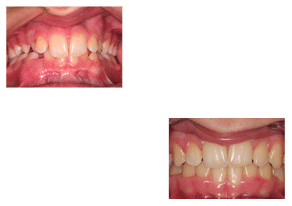Contemplating on whether or not to get braces for adults soon but don’t know what to expect? In this article, our orthodontist in Ocean Township NJ will talk about the general expectations behind getting braces at this stage of life. Keep reading ahead to find out!
Does it Hurt?
Wearing adult braces may cause some discomfort, especially in the days immediately following placement or adjustments. The discomfort is caused by the pressure exerted on the teeth by the braces as they shift into their new positions. This discomfort may feel like a dull ache and can be managed with over-the-counter pain medication.
It's also common to experience some soreness and tenderness in the gums, cheeks, and tongue as they get used to the braces. But this usually subsides within a week.
It is also important to note that not everyone experiences pain or discomfort while wearing braces, and some people may not experience any significant pain at all. However, if the pain is severe or prolonged, it is important to contact your orthodontist to make sure that everything is okay.
The Different Types of Braces for Adults
Traditional metal braces
Traditional metal braces for adults are the most common type of braces. They consist of metal brackets and wires that are attached to the teeth. The brackets are typically made of stainless steel, and the wires are made of a metal alloy. The brackets are bonded to the teeth with a special dental adhesive, and the wires are threaded through the brackets. The wires are then adjusted and tightened by the orthodontist to move the teeth into their proper position gradually.
The metal braces are highly visible on the teeth, which can be a concern for adult patients who are self-conscious about their appearance. However, they are typically the most affordable option among the different types of adult braces. They also have a good track record of being effective in treating a wide range of orthodontic issues, including misaligned teeth, overbites, underbites, and crowded teeth.
Ceramic braces
Ceramic braces for adults are similar to traditional metal braces, but they are made of clear or tooth-colored materials, making them less visible. They use the same basic mechanics of traditional metal braces, with brackets and wires, but the brackets are made of a ceramic material that blends in with the natural color of the teeth. The wires are also made of a tooth-colored metal alloy.
Ceramic braces are a popular choice among adult patients who are self-conscious about their appearance, as they blend in with the natural color of the teeth, making them less visible than traditional metal braces. However, they are more fragile than metal braces, and the ceramic brackets may chip or break if not taken care of properly.
Lingual braces
These are similar to metal braces but are placed on the inside (tongue-side) of the teeth, making them virtually invisible. They can be more difficult to clean and may be more uncomfortable than other types of braces.
Clear aligners
These are custom-made, clear plastic trays that fit over the teeth. They are virtually invisible and can be removed for eating, brushing, and flossing. They are considered cosmetic orthodontic treatments and can be more costly than traditional braces.
Self-ligating braces
These are similar to traditional braces, but the bracket and wire are held in place by a small clip instead of elastic bands, which allows for fewer appointments and quicker treatment.
The Consultation
A consultation for getting braces for adults typically involves a few steps. The orthodontist will first examine your teeth and bite, take X-rays and possibly make impressions of your teeth. This information will be used to create a treatment plan for you.
During the consultation, the orthodontist will also:
- Assess the alignment of your teeth and bite and the overall health of your mouth.
- Discuss your treatment options, including the types of braces available, the estimated length of treatment, and the cost.
- Address any concerns or questions you may have about the process, including any discomfort or pain you may experience during treatment.
- Explain the different types of braces available, including traditional metal braces, clear aligners, ceramic braces, lingual braces, self-ligating braces, and mini-braces.
- Advise you on how to care for your braces and teeth during treatment.
- Explain the follow-up schedule and how frequently you need to come in for adjustments.
- Provide information on the use of retainers after the treatment, which is an essential step to keep the teeth aligned and maintain the results.
During the consultation, you should also be prepared to discuss your medical history, any previous dental treatments, and your goals for treatment.
It is also important to note that, in some cases, the orthodontist may determine that braces are not the best option for you and may recommend other forms of treatment, such as clear aligners or jaw surgery.
Overall, the consultation is an important first step in the process of getting adult braces in Ocean Township and will provide you with the information you need to make an informed decision about your treatment.
How to Take Care of Braces for Adults
Properly caring for braces for adults is important to ensure that the treatment is successful and to minimize any discomfort or pain. Below are some tips on how to take care of your braces:
#1 - Brush and floss regularly:
It is important to brush your teeth at least twice a day with a soft-bristled toothbrush and fluoride toothpaste. Use orthodontic wax on the braces to protect the cheeks and gums from the brackets and wires. Flossing at least once a day is also important to remove plaque and food particles that can get stuck in your braces.
#2 - Clean your braces:
Use an interdental brush or a water flosser to clean around the braces and wires. You can also use orthodontic wax to cover the brackets and wires, which can make them more comfortable to wear.
#3 - Avoid hard and sticky foods:
Hard and sticky foods can damage your braces and prolong the treatment. Avoid foods such as popcorn, hard candy, nuts, and gum.
#4 - Protect your braces:
Be careful when playing sports or participating in other physical activities, as your braces can be damaged by a hit or fall. Wear a mouthguard if necessary.
#5 - Attend regular appointments:
Regular appointments are necessary to check the progress of your treatment and to make any necessary adjustments to your braces.
#6 - Wear retainers:
After the braces are removed, you will need to wear a retainer to keep your teeth in their new position. Wear retainers as directed by your orthodontist.
By following these tips, you can help ensure that your braces are properly cared for and that your treatment is successful. Remember to check with your orthodontist for any specific instructions and recommendations.
Braces for Adults in New Jersey
Monmouth-Ocean Orthodontics is a reputable orthodontic practice located in New Jersey that offers a wide range of adult braces options. We also provide free initial consultations, and if you have other concerns, you can send us a message, and we’ll be happy to get back to you.






